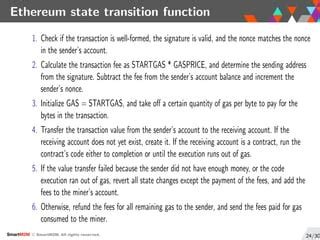Ethereum: The Nonce Conundrum – Should it be a number?

When it comes to Ethereum’s proof-of-work consensus algorithm, one of the most important parameters is the nonce (also known as the “work factor” or “hash function input”). The nonce is a unique value assigned to a specific attempt to solve the complex mathematical puzzle required to validate transactions and create new blocks. However, a common question debated among Ethereum developers is whether the nonce can be anything other than a number.
The Traditional View: Just Numbers
Traditionally, the nonce in Ethereum’s proof-of-work algorithm is assigned using a cryptographic hash function, typically SHA-256 or Keccak-256. This allowed for efficient and secure computation of the nonce value. The nonce itself does not have to be a number; it can be any unique value that meets the requirements of the hash function being used.
In other words, the actual nonce value is determined by the hash function, which generates a fixed-size output (typically 256 bits) based on the input data and computational complexity. The hash function does not provide an explicit way to convert the hash value to a specific numeric representation, such as a number.
The case for non-numbers: letters, bytes, or other arbitrary bits
Some developers have proposed alternative approaches that allow for non-numeric nonce values. For example:
- Letters: Using letters (e.g., A-Z) as input to the hash function can potentially lead to more diverse and secure nonce values.
- Bytes: Assigning bytes to the nonce value, where each byte is used to create a unique “piece” of data, can allow for even more diverse and secure non-numeric nonce values.
However, implementing these alternatives would require significant changes to the underlying proof-of-work algorithm and hash function implementation. Furthermore, ensuring the security and integrity of the Ethereum network must be carefully considered.
The Verdict: Numbers Only
In conclusion, while alternative approaches to assigning non-numeric nonce values have been proposed, there is currently no widely accepted standard or implementation in Ethereum’s proof-of-work algorithm.
For now, it appears that traditional numbers (32 hexadecimal digits) are still the most common and appropriate choice for nonce assignments. However, as our understanding of cryptographic hash functions evolves and new standards emerge, we may see the development of alternative approaches to nonce values.
Conclusion: A Recipe for Hash Chaos
In conclusion, while the conventional wisdom is correct, there is no compelling reason to abandon numbers in Ethereum’s proof-of-work algorithm. The security and integrity of the network depends on a well-designed and implemented hash function that relies on specific digital inputs (numbers). As we continue to explore new cryptographic techniques and algorithms, it will be exciting to see how these concepts evolve and what innovations emerge for secure and efficient computation.
